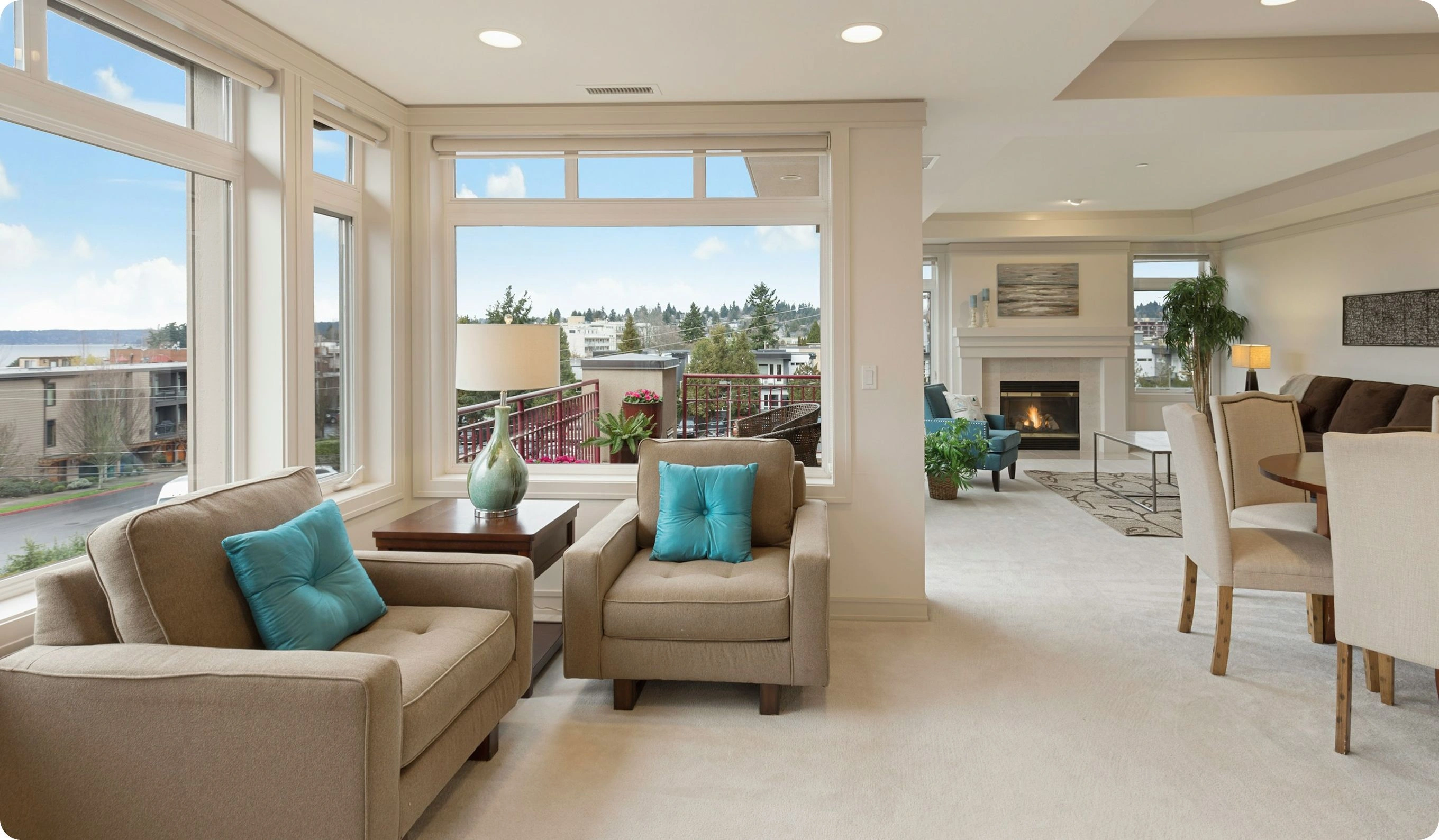Used Property Listings in Seoul – Direct from OwnerHousing in the capital oftech and culture

Best offers
in Seoul
Benefits of investment in
South Korea real estate
High-tech urban living with property value stability
Major cities like Seoul offer strong infrastructure, public transport, and value retention in real estate.
Fast resale and rental demand in key areas
Districts near universities, business centers, and transit hubs show constant demand from renters and buyers.
Condos with security, amenities, and minimal upkeep
Modern apartments often include doorman service, gyms, and automated systems — ideal for remote owners.
High-tech urban living with property value stability
Major cities like Seoul offer strong infrastructure, public transport, and value retention in real estate.
Fast resale and rental demand in key areas
Districts near universities, business centers, and transit hubs show constant demand from renters and buyers.
Condos with security, amenities, and minimal upkeep
Modern apartments often include doorman service, gyms, and automated systems — ideal for remote owners.

Useful articles
and recommendations from experts
Main title about secondary real estate in Seoul
Why secondary properties attract buyers
Secondary real estate in Seoul gives buyers immediate access to fully commissioned homes inside one of Asia’s most reliable urban systems. Instead of waiting through construction cycles and the punch-list drift that can follow new handovers, purchasers step into operating apartments and officetels already embedded in districts where utilities, building management and public services run on schedule. In the resale segment, underwriting rests on tangible, inspectable realities: daylight at different hours, acoustic exposure on specific façades, water pressure during peak use, elevator queuing at rush times, ondol floor-heating performance in winter, cross-ventilation in shoulder seasons and the responsiveness of the management office. Because these variables are known rather than promised, time to occupancy for end-users and time to income for landlords compress dramatically. For households, secondary stock reduces disruption, avoids hidden capex and turns the keys to a predictable routine from day one. For investors, it narrows the variance between model and outcome—rent, expenses, vacancy and renewal cadence—so capital compounding is steadier and less fragile.
Established neighbourhoods
Seoul’s fabric is a chain of mature micro-markets connected by a transit web that turns distance into minutes. South of the river, Gangnam, Seocho and Songpa anchor premium stock near corporate corridors, medical hubs and international schools; buildings here typically combine underground parking, concierge standards and governance that funds plant maintenance on time. Jamsil offers tower communities with river views and proximity to sports, retail and Line 2/9 interchanges; floor plans with dual aspect and deep balconies win on comfort and renewals. East of the CBD, Seongsu-dong blends converted industrial blocks with new residential clusters; secondary units that prioritize acoustic insulation and storage perform best as cafés and studios animate ground floors. West of the river, Yeouido’s finance island pairs river parks with express links across the city; compact, well-insulated units with quiet exposure lease fast to professionals who monetize short, predictable commutes.
North of the river, Mapo and Hapjeong balance culture and connectivity; layouts that fit real furniture, feature vented bathrooms and keep circulation clear outcompete larger but awkward plans. Yongsan’s centrality and rail hub draw executive tenancies; here, envelope performance and elevator reliability matter as much as skyline views. Jongno and Seongbuk retain heritage lanes and academic anchors, supporting year-round demand from civil service and university staff where management culture is responsive and reserve planning is transparent. In peripheral yet highly connected belts, Nowon, Guro and parts of Gwanak convert affordability into durable occupancy thanks to trunk-line access and everyday services. Across these contexts, municipal basics—paved access, lighting, drainage, waste collection and consistent public-realm upkeep—are delivered with regularity, lowering operating friction for owners and normalizing tenant expectations.
Who buys secondary real estate
Buyer diversity is Seoul’s resilience engine. Resident professionals optimize door-to-desk time, targeting one- and two-bedroom units within a ten- to fifteen-minute walk of transfer stations, with strong broadband, parcel handling and quiet exposure for late calls. Dual-income families prioritize two- and three-bedroom layouts that balance school catchments with parental commutes; they value workable kitchen triangles, real pantry and closet storage, balconies usable for laundry and ventilation, and stroller-friendly lobbies. University and healthcare belts draw students, researchers and staff into compact stock close to campuses and hospitals; when sound insulation, lighting and management are competent, renewal becomes routine. Remote-work households favour building management that communicates, fix-times that are kept, and neighbourhood cafés within five minutes—practicalities that matter more than amenity lists.
Investor archetypes split into yield aggregators and long-hold capital preservers. The first assembles clusters of compact units near Lines 2/3/9 and river-crossing interchanges to maximize leasing velocity and minimize service overhead. The second prefers slightly larger, governance-strong apartments with funded reserves and predictable service charges, trading headline rent for lower churn and fewer surprises. Diaspora buyers often pursue a dual-utility outcome—personal stays during visits and compliant medium-term leasing between them. Across profiles, motivations converge on three pillars: immediate habitability, measurable mobility and transparent running costs. VelesClub Int. maps briefs to street and building stack, rejecting “cosmetic wins” that photograph well but live poorly—awkward kitchens, dark corridors, weak acoustic separation or under-resourced management.
Market types and price ranges
Seoul’s secondary inventory spans a pragmatic continuum shaped by transit and employment nodes. Entry assets include studios and one-bedroom officetels or apartments near secondary stations and university corridors; they lease quickly to singles and weekday commuters because monthly outlays are manageable and commute savings are quantifiable. Core family stock consists of two- and three-bedroom apartments in mid- to high-rise condominiums with elevator access, bicycle storage, stroller-friendly lobbies and on-site management; demand concentrates along Lines 2, 3, 6 and 9 and river-adjacent axes with easy bridges. Premium secondary options include high-floor units with skyline or river outlooks in Gangnam–Jamsil–Yeouido–Yongsan quadrants and townhouse-style homes on quieter streets that emphasize privacy, while maintaining access to subway and arterials. Rather than chase top-quartile asking rents, resilient strategies emphasize a defensible price-to-utility ratio: kitchens that truly cook, bathrooms that vent properly, storage that clears circulation, and balconies that function as outdoor rooms rather than decorative ledges.
Micro-factors drive outcomes as much as headline age or address: stack position relative to intersections and rails, morning versus afternoon sun, window assembly and seals, elevator count per unit, water pressure at peaks, refuse and parcel logistics, and the clarity of house rules. Buildings with transparent budgets, funded reserves and timely plant maintenance experience fewer special levies and steadier net yields. Value creation in the secondary segment typically comes from measured upgrades—lighting layers for task and mood, storage systems that reclaim circulation, ventilation tuning, smart locks, water-pressure stabilization and network improvements—rather than heavy renovations that risk overcapitalization. VelesClub Int. underwrites each candidate with conservative expenses and realistic vacancy, aligning pro-forma behavior with operating reality.
Legal process and protections
Conveyancing for resale property in Seoul is formal and documentation-led. Transactions progress from price agreement to a binding contract with deposit mechanics and scheduled completion, with registration at the appropriate office perfecting ownership against third parties. Buyers engage licensed agents and legal professionals to confirm title, encumbrances and boundaries; condominium purchasers review management rules, meeting minutes, financial statements and planned works to gauge governance quality and future obligations. Technical due diligence inspects envelope condition, window and door sealing, plumbing stacks and pressure, electrical capacity and grounding, elevator logs, fire-safety systems and the status of heating and ventilation equipment. Inside the unit, diligence assesses acoustic performance, daylight, storage logic, appliance age and ondol system efficiency. Where furniture and white goods transfer, an itemized inventory and meter readings accompany closing to make handover unambiguous.
Foreign purchasers can acquire residential property subject to prevailing reporting and registration requirements that vary by asset type and locality. Because frameworks evolve, VelesClub Int. aligns clients with current local counsel, verifies approvals for prior renovations and structures funds flow through controlled accounts so completion occurs only when conditions are satisfied. Municipal and utility “good-standing” confirmations ensure that legacy arrears do not follow the asset. The result is a predictable path from offer to occupancy, with documents and handover artifacts kept in audit-ready order.
Best areas for secondary market
Performance concentrates where mobility, services and everyday calm intersect with clear identity. In Gangnam–Seocho–Songpa, units within one transfer of multiple job clusters exhibit short marketing windows and predictable renewals; dual-aspect living rooms, usable balconies and practical storage push satisfaction scores up and turnover down. Along the river, Yeouido and Mapo attract professionals who monetize commute certainty and evening access to parks; acoustic treatment and window sealing are decisive for comfort. Yongsan’s hub status favours well-managed buildings where elevator counts match unit numbers and parcel handling is streamlined. East-bank districts near Seongsu and Wangsimni reward layouts that insulate lively streets while preserving light and airflow; here, governance transparency and service-charge discipline separate steady performers from show-ponies.
North of the river, Jongno’s heritage corridors and Seongbuk’s academic belts sustain stable demand for compact, quiet stock with responsive management and funded reserves. In Nowon and Guro value belts, addresses within ten to twelve minutes of reliable lines convert affordability into durable occupancy; governance-strong towers with documented maintenance consistently outperform. Around university and medical hubs, furnished one- and two-bedroom units with sound insulation and robust broadband renew at high rates across academic calendars. Across all archetypes, VelesClub Int. scores streets and buildings on fabric condition, envelope and systems, daylight, noise mapping, circulation logic, micro-amenities and mobility, guiding capital toward pockets where livability becomes rentability and liquidity at exit.
Why choose secondary over new + VelesClub Int. support
Choosing secondary property in Seoul resolves three constraints at once. First, timeline risk collapses: the asset exists, operates and can be occupied or leased soon after closing—no waiting for defect lists, amenity commissioning or retail fit-outs to catch up. Second, specification uncertainty diminishes: acoustics, ventilation, water pressure, ondol performance, balcony usability and building-management responsiveness are tested during diligence rather than inferred from renderings. Third, capital allocation becomes precise: instead of underwriting developer premiums and early-life maintenance noise, owners direct targeted budgets to improvements with measurable comfort and rentability payoffs—window sealing and exterior shading, lighting design, storage systems, water-pressure stabilization, smart locks and network upgrades. Character in established districts—tree cover, café culture, reliable services and known traffic patterns—adds a quality-of-life premium that fringe projects struggle to replicate.
VelesClub Int. amplifies these structural advantages with an end-to-end execution model. Our sourcing looks beyond glossy portals to include thinly traded and off-market opportunities; valuations reference achieved rents and transactions, not wishful asks; and underwriting assumes conservative expenses, realistic vacancy and periodic plant renewal so pro-forma behavior tracks operations. Legal and technical teams coordinate document collection, registry verification and compliance checks on prior works, negotiating seller participation for cure items where appropriate. After completion, our operations desk manages compliant leasing, preventive maintenance, service-charge reconciliation and performance dashboards that consolidate occupancy, arrears, work orders, capex and benchmarks—so owners steer by data, not anecdotes. The outcome is quiet compounding: a Seoul secondary asset that delivers resilient cash flow, preserves capital and remains liquid in a transit-rich, service-anchored metropolis where everyday convenience is the ultimate amenity.
